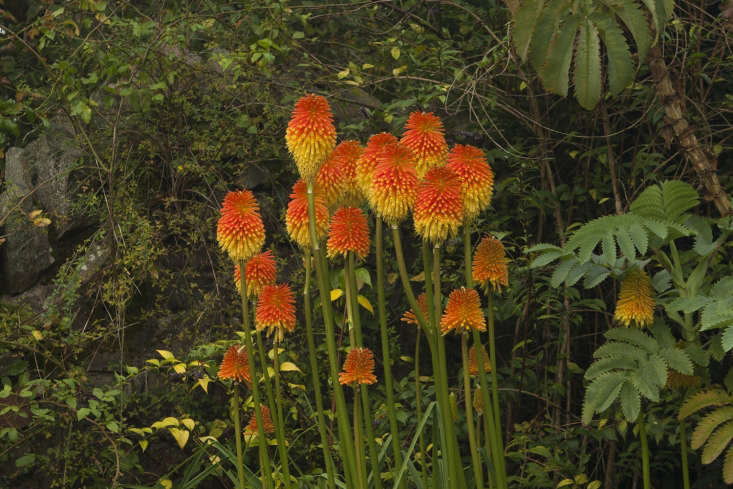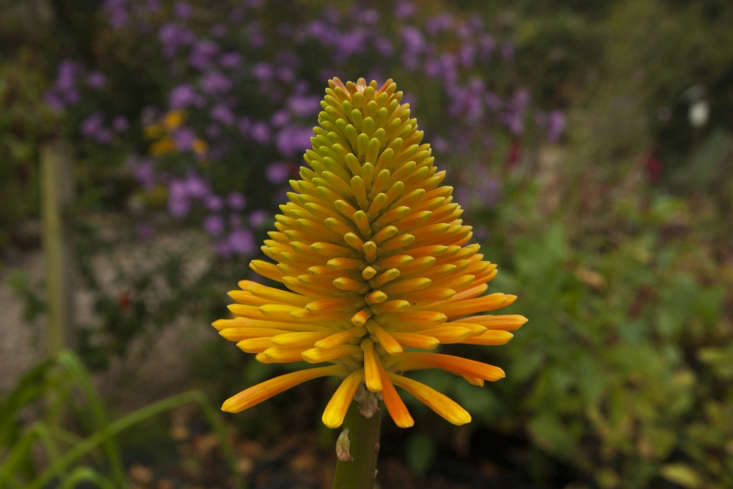Red hot pokers have languished unloved since the 1970s, an easy target for the taste police. Now they are popping up again in top flight borders, planted by adventurous gardeners who only think of fashion in terms of flouting it. The autumn-flowering varieties bring a color focus as other plants begin to collapse. Evergreens and semi-evergreens are the perfect foil for these South African specimens.
Photography by Jim Powell for Gardenista.

At the height of summer, when there is so much to choose from, it is easier to quibble about the desirability of a red hot poker. Straying into the Sunset Garden at Sissinghurst one July, I was shocked to see the peculiar yellow and red concoction, Kniphofia ‘Royal Standard’, amid all the sophistication. But this reaction had more to do with culture than horticulture. Introduced to the UK in 1921, ‘Royal Standard’ would have been one of the few varieties available when the garden at Sissinghurst was first made, and it became a very popular plant (a photograph of Virginia Woolf surrounded by 1930s kniphofias puts it in context). Now, the point is to find a variety which brings life to a darkening garden. This variety would appear to be the orange giant, Kniphofia rooperi.
For more Bloomsbury flowers, see: Required Reading: Virginia Woolf’s Garden.



At Great Dixter in East Sussex, a good plant with a bad image will always be shown to its best advantage and Kniphofia rooperi has found a home in its barn garden. Conifers of every shape and size are popular at Dixter, with pine a strange and ingenious pairing to red hot pokers. Dwarf mountain pine (Pinus mugo) would work, while the more yellow Pinus Strobus ‘Hillside Winter Gold’ (shown here) provides the backdrop in the Old Court Nurseries garden, near Malvern, England.
Vita Sackville-West loved them, while her husband Harold Nicolson hated them. For more horticultural gossip, see:
• The English Gardener: His and Hers, Harold and Vita
• Required Reading: Vita Sackville-West’s Sissinghurst
• Garden Visit: Vita’s Sunset Garden.












Have a Question or Comment About This Post?
Join the conversation